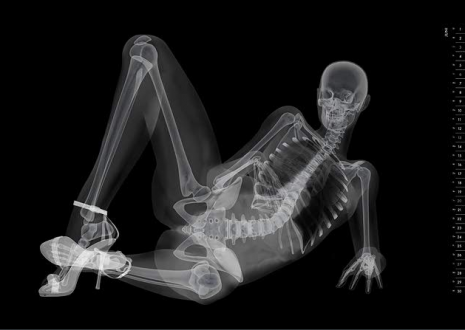
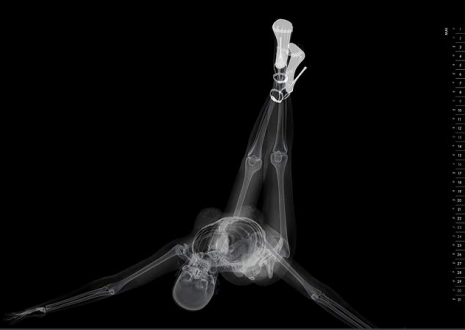
Super saucy x-ray pinup calendar by Japanese monitor company EIZO.
See more striking images over at copyranter:
What German physicians will be spanking their stethoscopes to this year.
(via Nerdcore)


Super saucy x-ray pinup calendar by Japanese monitor company EIZO.
See more striking images over at copyranter:
What German physicians will be spanking their stethoscopes to this year.
(via Nerdcore)
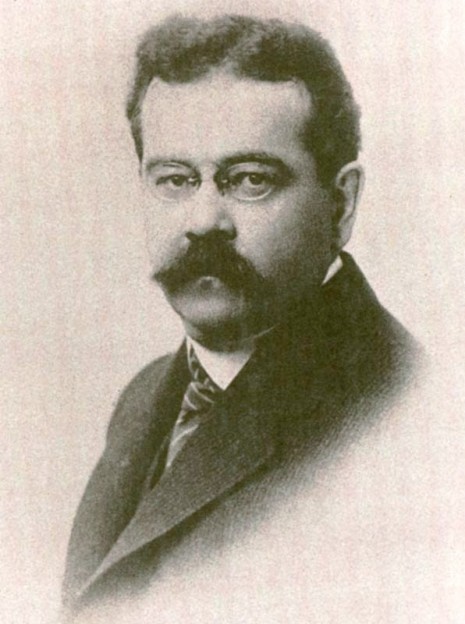
You could call Charles Fort (1874 – 1932) the “first Ufologist”—and many do—but that’s already, um, damning the quirky author of The Book of the Damned with feint praise. Fort was more of a scientist (or scientific researcher), but not in any sort of traditional sense most people would recognize as science. A better description of his interests would be to say that what fascinated Fort were the things which were intellectually excluded by science. Rains of frogs, alien spacecraft, meat falling from the sky and spontaneous human combustion were the grist for his mill and this is what he spent his life meticulously cataloging.
Fort was also a bit of a comedian, a Swiftian satirist of science. He hated the idea of experts and thumbed his nose at scientific authority. Fort was a sworn enemy of orthodox rationality. His prose is a delight and is a part of his strong attraction for many readers. His style is “circular,” I guess you might say. Repetitive, but this is kind of the point, to be bludgeoned by the sheer force of the number of examples he’d throw at readers, into accepting the simple fact that something awfully strange is going on here.
Fort, who invented words like “teleporter” kept his notes, his Forteana, if you will, on notecards. Although from time to time, the eccentric author would burn his research, tens of thousands of his cards survive and can be viewed at the New York Library’s Rare Book Room (I’ve looked at some of them myself). In his day, Fort had his share of detracters (his friend H.L. Mencken said his head was filled with “Bohemian mush”!) but also many prominent admirers such as Ben Hecht, Theodore Drieser and Oliver Wendell Homes.
The influence of Charles Fort’s work is subtle but pervasive throughout popular culture. No Fort, no X-Files, for instance. No Art Bell or George Noory, either. Although Fort was in life and after his death, a relatively obscure writer, his work still holds a strong fascination for many people who consider him an intellectual giant. And of course there is a magazine, The Fortean Times, which keeps the flame alive as well as regional organizations of Fortean enthusiasts and a yearly convention.
Dangerous Minds pal Skylaire Alfvegren organizes The League of Western Fortean Intermediatists (or L.O.W.F.I) and she’s got a great short biographical essay of Charles Fort at the Fortean West website:
There is a man, largely undiscovered by the modern world, whom I, and many others, believe made one of the most significant contributions to the world of science. Had it not been that he vehemently opposed modern scientists and their methods, his work might be enjoying a greater popularity than it does. Had this man decided to write about completely different topics, he would be hailed as a fabulous literary character. Here was a peculiar fellow. Charles Fort devoted 26 years of his life to compiling documented reports of scientific anomalies from journals and newspapers from all around the world. He lived in dire poverty so that truth could prevail. His life’s work may one day be of great scientific worth, should the established scientific community ever muster the courage to approach it.
Anomalies. This is what Fort trafficked in. Reports of prehistoric beasts frolicking in the world’s oceans. (Loch Ness, Champ, Storsjon Animal). Ancient artifacts found in improbable places (Roman coins in the deserts of Arizona, Chinese seals found buried deep in the forests of Ireland, small statues of horses discovered in pre-Columbian Venezuela). Falls of things other than rain from the sky (red rains in 1571 England, 1744 Genoa; a rain of “73 organic formations, particular to South America” in France in 1846). Unidentified aerial phenomena (excluding Ezekiel’s Biblical description. Fort’s list contains the first known report of a so-called “UFO”, dating from 1779). These are but a few of the subjects Fort spent his lifetime collecting reports of. This anomalous data are roped together under the banner of “Forteana”, a term which probably does not exist in any dictionary, because that which it pertains to isn’t supposed to exist at all.
He who championed underdogs, has been and will likely continue to be, one of the greatest underdogs of all time. For he has not a baseball team or brooding thespians to compete with, but the entire history of the scientific world. His work spat in the face of conventional scientists. There is much going on around us that defies explanation. Fort amassed reports of events seen by humans around the world countless times, which, none the less, have been dismissed. The data he collected were excommunicated by science, which acts like a religion. “The monks of science” he wrote, “dwell on smuggeries that are walled away from event-jungles- Science has done its utmost to prevent whatever science has done” (the Book of the Damned, p. 245). His legacy, his collection of data lies before us. It is indisputable, and yet still ignored. The reports he gathered could make any enemy of science acquire a renewed enthusiasm for the subject. In his four published works, the Book of the Damned (1919). New Lands (1923) Lo! (1931) and Wild Talents (1932) we find over 1,200 documented reports of occurrences which orthodox science refuses to attempt to explain. Explanation was not Fort’s purpose. He merely presented the data, sometimes with his own speculations, sometimes with tongue in cheek. While anomalies can be entertaining, they can also be deeply disturbing, for they undermine the foundations of science, the idea that every thing in this world is rational and under control. Articles like those collected in Fortean Times and the INFO Journal (International Fortean Organization), two publications which continue Fort’s work, prove that things are not under our control, nor will they ever be. Many people, including scientists, find this discomforting and so ignore that which they cannot explain.
The Life, Work and Influence of Charles Fort (Fortean West)
So cute and cuddly! As today’s WSJ reports, the BP disaster in the Gulf of Mexico “May Harbor Unique Hazards.” Some version in the fish kingdom of the above, perhaps?

Sidewalk wrought iron artisan James Mutahi works his homemade arc welder in Limuru, north of Nairobi, Kenya. Photo: Dominic Wanjihia. From Afrigadget.
Preparation for the 2010 World Cup in South Africa (which starts in a couple of days) has drawn the West’s attention to the continent as a premiere sports and entertainment venue. But let’s also recognize that African countries have been quietly building a new set of infrastructures based on mobile and web connectivity, grassroots-tech ingenuity and turbo-micro-entrepreneurship.
Kenyan-raised Erik Hersman’s White African and Afrigadget are just a couple of the many blogs raising awareness about Africa’s long-running tech revolution, as epitomized by events like Maker Faire Africa. The below, from JustGiving’s YouTube channel and featured in Afrigadget, teases out some of the more everyday implications:
As a side-note: You may have read about the survivalist trend in America that mostly involves stocking up a panic room with guns, gold and Twinkies. Many populations in Africa continue to survive and innovate through the kind of emergency situations—natural disasters, economic devastation, military dictatorships, etc.—that your friendly neighborhood doomsayer can’t comprehend.
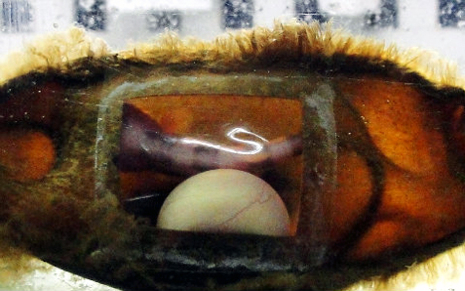
I’m not sure how such a thing is accomplished, but a group of marine scientists at Brazil’s Guaruja Aquarium attached a plastic window to a shark’s egg so as to better observe the development of the embryo inside. A pretty astounding clip of the little swimmer follows below (and for those of you concerned about such things, the shark remained unaffected by the window):
Researchers Install Window On Shark Egg
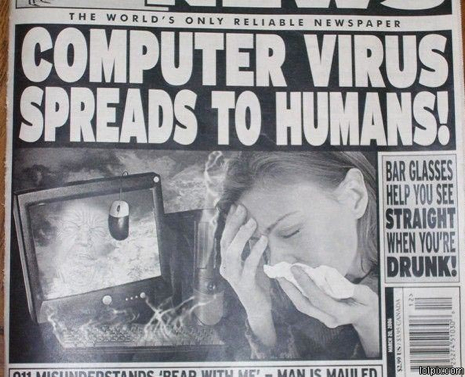
In a further sign that our world’s galloping toward a Cronenbergian future, University of Reading professor, Mark Gasson, “contaminated” a computer chip which was then inserted into his hand. Gasson’s pre-viral hand allowed him exclusive access to his lab and cellphone.
Once infected, though, his hand could pass along the virus to whatever device that next scanned the chip. If other chips had been wired into, or tapping, Gasson’s system, they too would have been corrupted. A conversation with Gasson follows below:
(via MisterHonk)
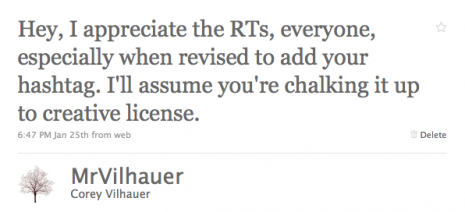
In a development which will likely strike fear into the hearts of all Dangerous Minds readers, new software has been developed which can recognize sarcastic tweets. Presumably this is 90% of the content on Twitter. Via Slashdot:
“Even humans sometimes fail to recognize sarcasm and irony; can machines do better? An algorithm that identifies sarcastic tweets (PDF) on Twitter and sarcastic sentences in product reviews on Amazon will be presented next week in the International Conference for Weblogs and Social Media in Washington, DC, and in the Computational Natural Language Learning in Sweden in July. A team from the Hebrew University, Israel, has developed an algorithm that identifies sarcastic sentences by using a machine learning technique in which a small number of sarcastic sentences act as seeds for the software to learn and generalize upon. The algorithm can then identify sarcastic sentences that are nothing like the examples. The variety of recognized sarcastic sentences is impressive, though the results are not perfect. But again, we don’t do it so well ourselves, do we?”
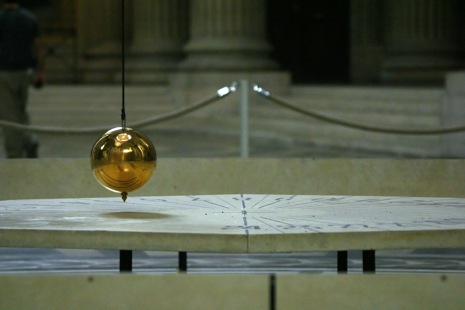
Foucault’s Pendulum—the original one used by French scientist Leon Foucault to demonstrate the rotation of the Earth—has been damaged beyond repair in an accident at the Musee des Arts et Metiers in Paris.
Foucault’s theory behind the instrument was to set a large, carefully calibrated pendulum swinging back and forth. If the earth was stationary, the pendulum would swing forever. Because the earth spins, the pendulum’s plane of rotation changed. In 24 hours, the rotation of the pendulum would change 180 degrees. When then pendulum’s wire cable snapped and the brass sphere hit the ground, it was dented in three places and will not be able to be fixed.
From the Times Higher Education:
In 1851, Foucault used the pendulum to perform a sensational demonstration in the Paris Pantheon, proving to Napoleon III and the Parisian elite that the Earth revolved around its axis. Such was its success that the experiment was replicated throughout Europe.
Thierry Lalande, the museum’s ancient scientific instruments curator, said that the pendulum’s brass bob had been badly damaged in three places and could not be restored.
“It’s not a loss, because the pendulum is still there, but it’s a failure because we were unable to protect it,” he said. The circumstances surrounding the accident have raised eyebrows in France.
The museum regularly hosts cocktail parties in the chapel that houses the pendulum, and Mr Lalande admitted that several alarming incidents had occurred over the past year. In May 2009, for example, a partygoer grabbed the 28kg instrument and swung it into a security barrier.
Amir D. Aczel, research Fellow in the history of science at Boston University, described the news of the accident as “saddening”.
“It is certainly one of the most important historical instruments of all time. It’s a bit like hearing that one of the statues at the Vatican has been broken,” he said.
Foucault’s experiment involved releasing a pendulum and watching the Earth rotate under its oscillation frame. Dr Aczel said that it brought “closure for Galileo” and led the Church to accept the rotation of the Earth.
Foucault’s pendulum is sent crashing to Earth (Times Higher Education)

Attention hypochondriacs! If you are feeling the need to seriously freak yourself out, look no further than your local Walgreens store! Yup, starting Friday you can purchase an at-home test kit that allows people who, well, worry about these things (obsessively) to see if their DNA makes them more likely to develop one (or more!) of dozens of different health conditions. Breast cancer? Check. Heart disease? Check! Alzheimer’s disease? Can do! Just swab your cheek, pop it in the mail and within a week or so, your life will be completely ruined!
From The Chicago Tribune:
The product’s introduction raises immediate concerns among scientists, bio-ethicists and genetic counselors. They worry that consumers will misuse or misunderstand the results of a test so open to interpretation it is potentially meaningless, or frightening, especially without a full medical assessment.
On Tuesday, the Food and Drug Administration told the Tribune it is investigating the medical claims the product’s manufacturer, California-based Pathway Genomics, is making in marketing its genetic test, which hasn’t been approved by U.S. regulators.
Pathway officials say the company’s home genetic test meets federal regulations and doesn’t require FDA approval.
“The tests conducted are not an in-vitro medical device and are not intended for use in diagnosis, treatment, mitigation or cure of disease. It does provide information that allows a person to learn about their health to make healthier lifestyle choices,” said Ed MacBean, Pathway’s vice president of product management. “If the FDA contacts us, we will discuss it and address any concerns they might have.”
To this I add merely… “Yikes.” This product will have all kinds of unintended consequences, methinks. Results for the tests cost between $79 to $179, depending on the type of tests you chose.
Genetic test kits to hit stores amid controversy (Chicago Tribune)
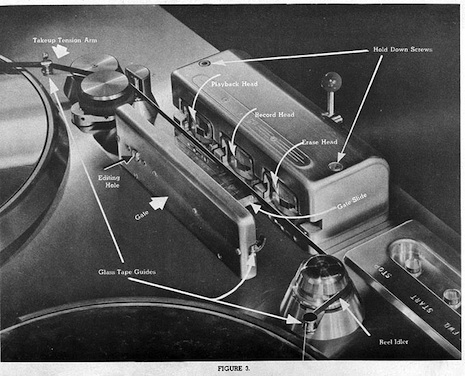
Speaking of doing interesting things with tape and tape recorders, here are a few engaging examples of art based on the nearly dead medium. Few are the recording purists who remain loyal to the magnetic stuff but Its tactile plasticity sure works well in these contexts.
(below) Christian Marclay‘s “The Beatles” (1989): Recorded music of the Beatles on crocheted magnetic tape. Oh how I love this, so many layers of meaning. Plus it’s just screaming to be worked over the by the analogue tape glove !

Signal to Noise
Anis Haron
thx Robert Chrysler !